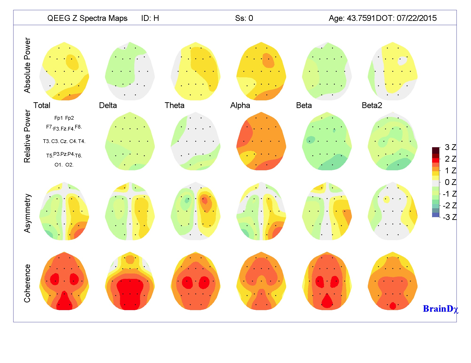Unveiling the Connection Between quantitative EEG and Sleep Disorder Patterns for Enhanced Assessment and Therapy
Sleep apnea is a common slumber disorder that affects many individuals throughout the world. It happens when a individual's respiration is disrupted during sleep, resulting to poor sleep quality and multiple medical issues. One of the methods researchers and physicians are working to better understand and identify sleep apnea is through a method called quantitative electroencephalography, or qEEG. This method measures the electronic activity of the cerebrum and can offer important insights into how sleep apnea impacts cerebral function and general well-being.
qEEG involves placing small sensors on the scalp to record cerebral waves. These brain waves are then analyzed to identify trends that may suggest sleep disorders, including sleep apnea. By examining these trends, healthcare professionals can obtain a more precise understanding of how sleep apnea disrupts normal cerebral activity during slumber. This data can be crucial for developing efficient therapeutic strategies tailored to specific clients. Comprehending the connection between qEEG and sleep apnea can lead to improved identification techniques and superior results for those affected by this condition.
Studies has shown that individuals with sleep apnea often exhibit specific changes in their brain oscillation trends. For example, during episodes of apnea, the cerebrum may exhibit heightened function in specific regions while other regions become less engaged. These alterations can influence how effectively a individual slumbers and how rested they feel upon waking. By employing qEEG to sites monitor these cerebral wave trends, physicians can recognize particular traits of sleep apnea in clients, which can assist in formulating a more precise diagnosis. This is especially important because sleep apnea can occasionally be mistaken for alternative sleep conditions, resulting to misguided therapies.
In furthermore to enhancing identification, qEEG can also serve a part in assessing the efficacy of therapies for sleep apnea. For example, after a patient begins using a continuous positive airway pressure (CPAP) machine, which helps keep the airway open during sleep, qEEG can be used to assess changes in cerebral activity. If the cerebrum exhibits enhanced patterns of slumber after starting treatment, it may indicate that the treatment is functioning well. This response can assist physicians formulate required adjustments to treatment plans, ensuring that patients receive the best care possible.
Overall, the connection between qEEG and sleep apnea patterns is an exciting area of research that offers potential for enhancing identification and treatment. By understanding how sleep apnea impacts cerebral function, healthcare providers can develop more effective strategies to help clients attain improved slumber and enhance their general health. As studies progresses to advance, it is likely that qEEG will become an essential tool in the battle against sleep apnea, resulting to superior results for those who experience from this challenging condition.